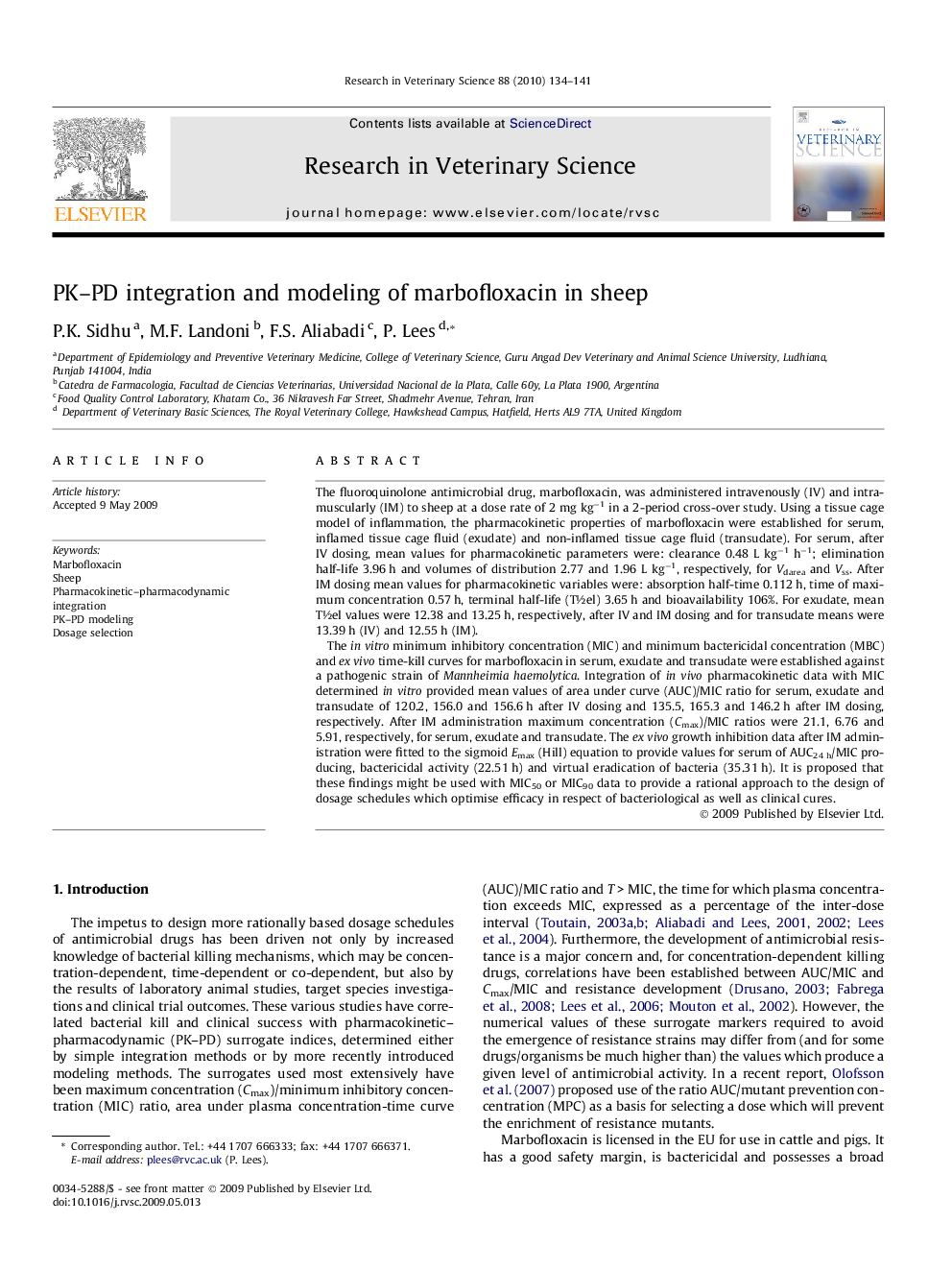| Article ID | Journal | Published Year | Pages | File Type |
|---|---|---|---|---|
| 2456066 | Research in Veterinary Science | 2010 | 8 Pages |
The fluoroquinolone antimicrobial drug, marbofloxacin, was administered intravenously (IV) and intramuscularly (IM) to sheep at a dose rate of 2 mg kg−1 in a 2-period cross-over study. Using a tissue cage model of inflammation, the pharmacokinetic properties of marbofloxacin were established for serum, inflamed tissue cage fluid (exudate) and non-inflamed tissue cage fluid (transudate). For serum, after IV dosing, mean values for pharmacokinetic parameters were: clearance 0.48 L kg−1 h−1; elimination half-life 3.96 h and volumes of distribution 2.77 and 1.96 L kg−1, respectively, for Vdarea and Vss. After IM dosing mean values for pharmacokinetic variables were: absorption half-time 0.112 h, time of maximum concentration 0.57 h, terminal half-life (T½el) 3.65 h and bioavailability 106%. For exudate, mean T½el values were 12.38 and 13.25 h, respectively, after IV and IM dosing and for transudate means were 13.39 h (IV) and 12.55 h (IM).The in vitro minimum inhibitory concentration (MIC) and minimum bactericidal concentration (MBC) and ex vivo time-kill curves for marbofloxacin in serum, exudate and transudate were established against a pathogenic strain of Mannheimia haemolytica. Integration of in vivo pharmacokinetic data with MIC determined in vitro provided mean values of area under curve (AUC)/MIC ratio for serum, exudate and transudate of 120.2, 156.0 and 156.6 h after IV dosing and 135.5, 165.3 and 146.2 h after IM dosing, respectively. After IM administration maximum concentration (Cmax)/MIC ratios were 21.1, 6.76 and 5.91, respectively, for serum, exudate and transudate. The ex vivo growth inhibition data after IM administration were fitted to the sigmoid Emax (Hill) equation to provide values for serum of AUC24 h/MIC producing, bactericidal activity (22.51 h) and virtual eradication of bacteria (35.31 h). It is proposed that these findings might be used with MIC50 or MIC90 data to provide a rational approach to the design of dosage schedules which optimise efficacy in respect of bacteriological as well as clinical cures.
